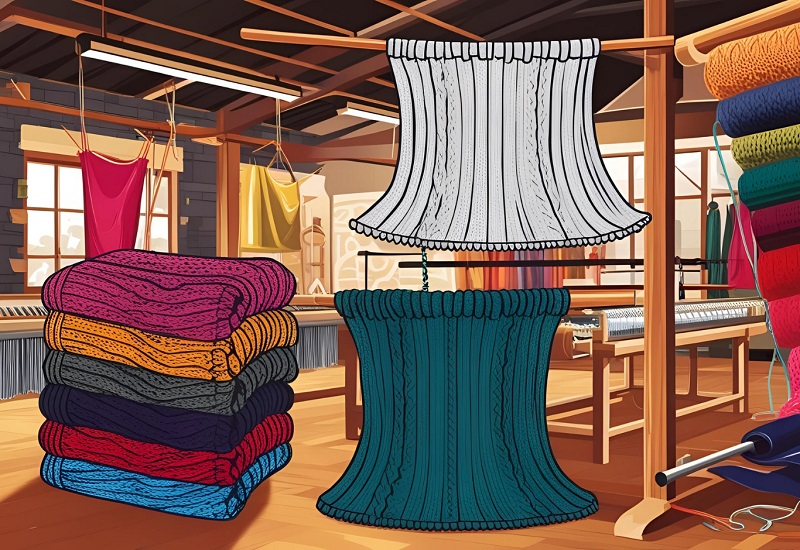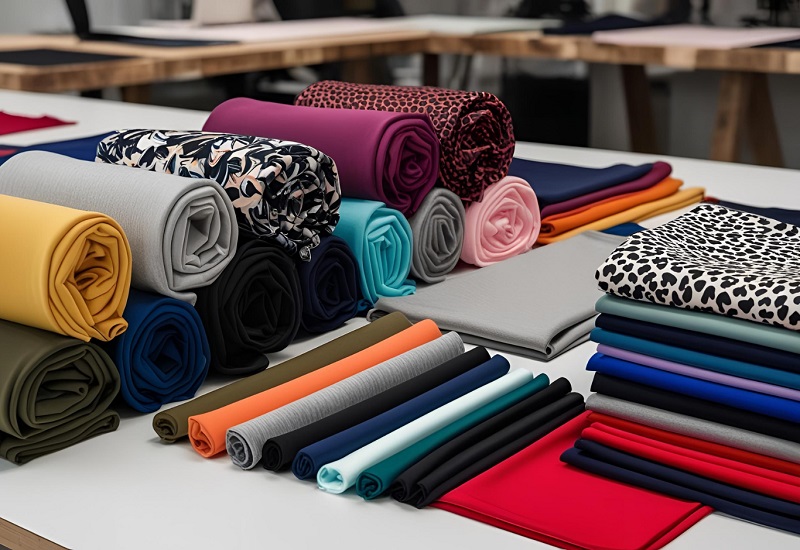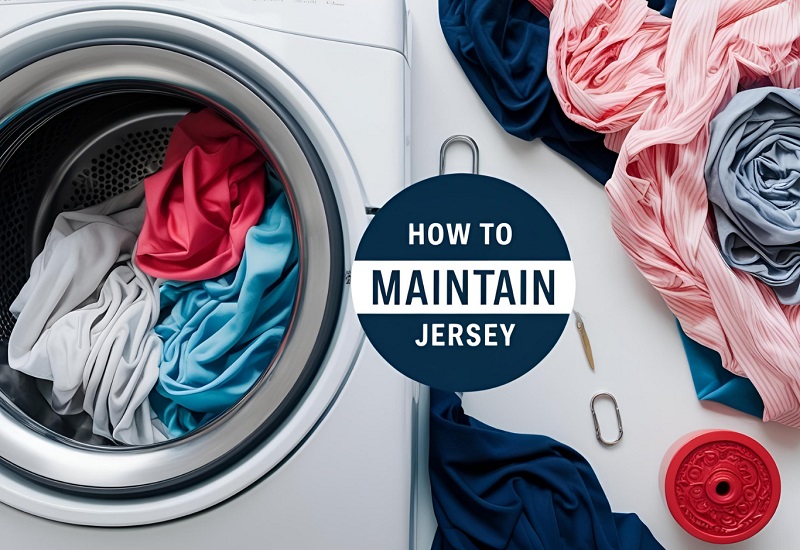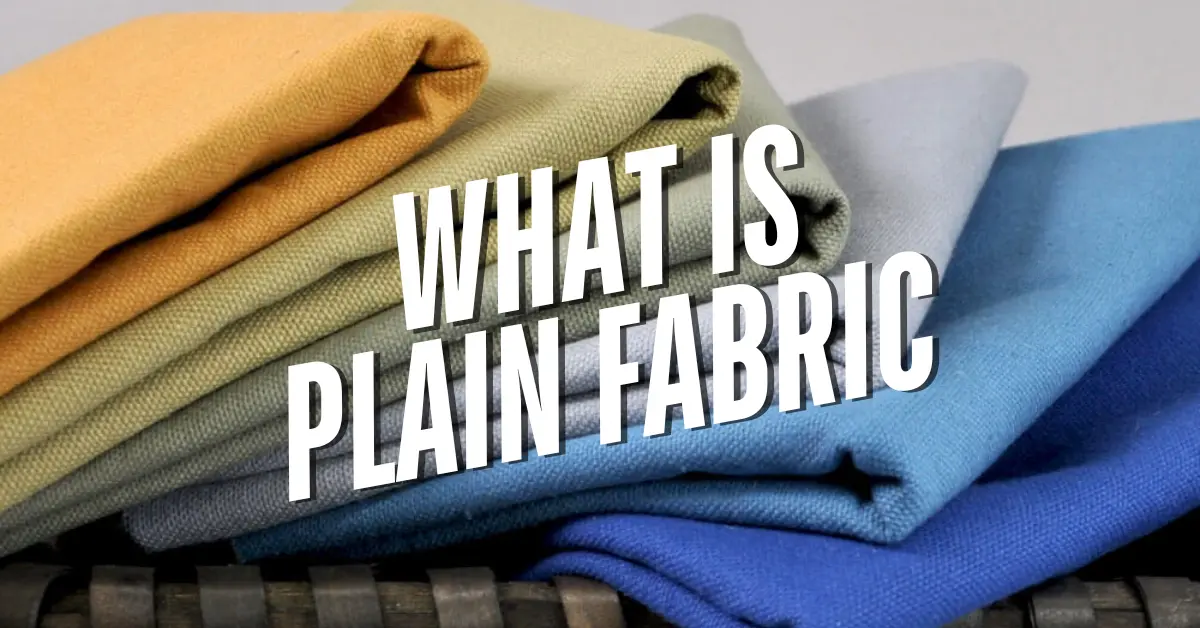As a textile engineer with hands-on experience in fabric manufacturing, I often get asked, “What is jersey fabric?” It’s one of the most widely used textiles in both fashion and home wear. Known for its comfort, stretch, and soft texture, jersey fabric plays a major role in modern clothing. In this article, I’ll explain how it’s made, its features, types, and why it’s so popular today.
Jersey Fabric: Meaning and Construction

What is Jersey Fabric?
Jersey fabric is a knitted textile made with interlooping yarns instead of woven threads. This technique gives the fabric its natural stretch and smooth surface. Originally made from wool, modern jersey fabric is commonly produced from cotton, polyester, viscose, or blends.
How Is Jersey Fabric Made?
Jersey is created using knitting machines that produce either a single-knit or double-knit structure. Single jersey is light and stretchy on one side with a flat back. Double jersey is thicker and has a smooth finish on both sides. Fibers like cotton make the fabric soft and breathable, while synthetic fibers such as polyester add strength and wrinkle resistance.
Key Features of Jersey Fabric

Soft Texture
Jersey fabric has a soft, smooth feel. This is due to its knitted structure, which allows the yarns to move more freely. The softness increases with higher cotton content or fine yarns.
Stretch and Flexibility
Because of the knit method, jersey fabric stretches naturally across the width. Adding fibers like elastane or spandex increases elasticity, making it ideal for activewear and close-fitting garments.
Lightweight and Breathable
Cotton jersey is breathable and absorbs moisture well. This makes it suitable for hot weather or high-activity clothing. On the other hand, polyester blends offer better durability and are quick-drying.
Draping Ability
Jersey fabric drapes well, especially in lightweight versions. It flows nicely around the body, which is why it’s often used for dresses and skirts.
What is Jersey Fabric Used For?
Clothing Applications
One of the most common uses of jersey fabric is in casual and daily wear. T-shirts, leggings, tops, and nightwear are mostly made from cotton or rayon jersey. The comfort and stretch make it a go-to choice for all age groups.
Sportswear and Activewear
Polyester or blended jersey fabrics are used in gym clothing, sports uniforms, and yoga wear. These versions offer moisture-wicking properties, elasticity, and shape retention.
Home Textiles
Jersey fabric is also used in fitted bed sheets, pillowcases, and cushion covers. Its flexibility makes it easy to fit around mattresses and pillows.
Different Types of Jersey Fabric

Cotton Jersey
Cotton jersey is lightweight, breathable, and soft. It’s suitable for baby clothes, T-shirts, and loungewear. It tends to wrinkle more than synthetic blends but offers a natural feel.
Synthetic and Blended Jersey
Blends of polyester, rayon, or viscose with spandex offer more durability and stretch. These are often used in athletic or performance wear due to their strength and quick-drying nature.
Single Jersey vs. Double Jersey
- Single Jersey: Thinner, with one smooth and one textured side. Used for casual T-shirts.
- Double Jersey: Heavier, with smooth surfaces on both sides. Ideal for jackets, structured tops, and skirts.
Pros and Cons of Jersey Fabric
Benefits
- Comfortable: Feels soft against the skin
- Stretchable: Allows easy movement
- Breathable: Keeps the body cool
- Versatile: Works for many types of garments
- Low-Cost: Affordable in both cotton and synthetic forms
Limitations
- Prone to Pilling: Especially with polyester blends
- Can Stretch Out: Single jersey may lose shape over time
- Wrinkles in Cotton Variants: Needs gentle care to retain appearance
How to Wash and Maintain Jersey Fabric

Washing Tips
To maintain quality, machine wash jersey fabric in cold water using a gentle cycle. Avoid strong detergents as they can damage the fibers.
Drying and Ironing
Air drying is best to avoid shrinking. If needed, use a low-heat iron and press the garment inside out. Store folded rather than hanging to prevent stretching.
Final Thoughts
So, what is jersey fabric? It’s a flexible, breathable, and soft material made from knitted fibers. Available in various weights and fiber blends, jersey fabric is ideal for everything from T-shirts to bedsheets. Whether you’re designing everyday wear or choosing fabrics for retail, jersey remains a reliable, cost-effective choice that combines comfort with function.

Manager – Fabric Technical and Sourcing/Product Development/ Sustainable Material Management.
I am a B.Sc .-educated Manager of Fabric Sourcing and Technology with extensive experience in the apparel and fashion industry. Passionate about trend analysis, fabric sourcing, and sustainable textile solutions, I thrive in fast-paced environments that demand innovation, adaptability, and leadership.
As a servant leader, I am committed to honesty, transparency, and continuous process improvement. My expertise spans fabric development, product quality management, and supply chain optimization, ensuring exceptional performance across all facets of sourcing and production.
Core Skills & Expertise
✔ Fabric Sourcing & Development – Specialized in regular and sustainable textiles (BCI, Organic, Recycled).✔ Trend Analysis – In-depth understanding of global fashion and fabric trends.✔ Product Development – Expertise in material innovation and process optimization.✔ Quality Management – Strong focus on process control, ensuring high-quality production.✔ Leadership & Problem-Solving – Solution-oriented approach to team management and decision-making.
Technical Proficiency
🖥 Software & Tools:▪ Microsoft Outlook, Excel, Word▪ PLM (Product Lifecycle Management)
🌱 Sustainable & Ethical Practices:▪ Better Cotton Initiative (BCI)▪ Organic & Recycled Fabric Management
Key Strengths
✅ Solution-Focused Leadership – Driving innovation and efficiency in fabric sourcing.✅ Quick Decision-Maker – Adapting to market shifts and production challenges.✅ Team Player with a Positive Attitude – Ensuring collaboration and productivity.✅ Strong Time Management – Meeting deadlines while maintaining quality.
Professional Achievements
🏆 Li & Fung GEM Award – Recognized for fabric sourcing and supply chain management excellence.🏆 Group CEO GEM Award – Honored for outstanding leadership and process innovation.

